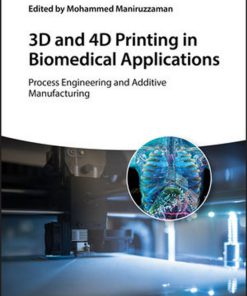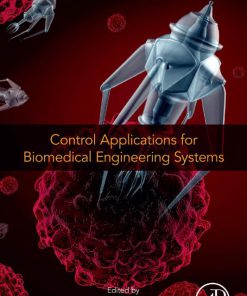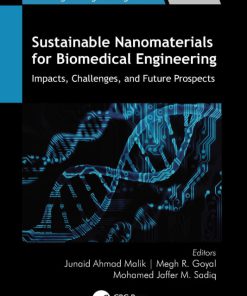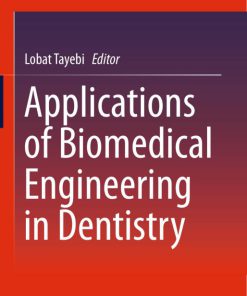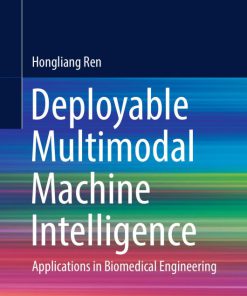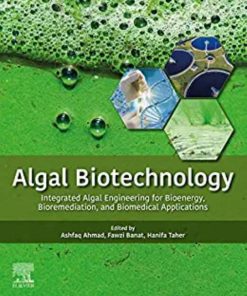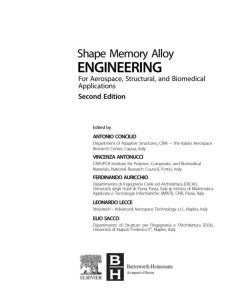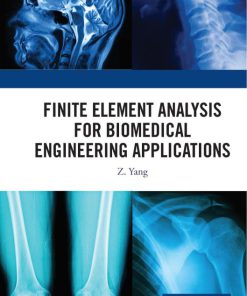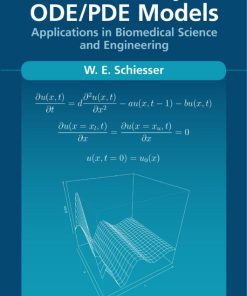(Ebook PDF) Algal Biotechnology Integrated Algal Engineering for Bioenergy Bioremediation and Biomedical Applications 1st edition by Ashfaq Ahmad, Fawzi Banat, Hanifa Taher 032390436X 9780323904360 full chapters
$50.00 Original price was: $50.00.$25.00Current price is: $25.00.
Authors:Ashfaq Ahmad, Fawzi Banat, Hanifa Taher , Series:Biomedical [157] , Author sort:Ashfaq Ahmad, Fawzi Banat, Hanifa Taher , Languages:Languages:eng , Published:Published:Sep 2022 , Publisher:Elsevier
Algal Biotechnology Integrated Algal Engineering for Bioenergy, Bioremediation & Biomedical Applications 1st edition by Ashfaq Ahmad, Fawzi Banat, Hanifa Taher – Ebook PDF Instant Download/DeliveryISBN: 032390436X, 9780323904360
Full download Algal Biotechnology Integrated Algal Engineering for Bioenergy, Bioremediation & Biomedical Applications 1st edition after payment.
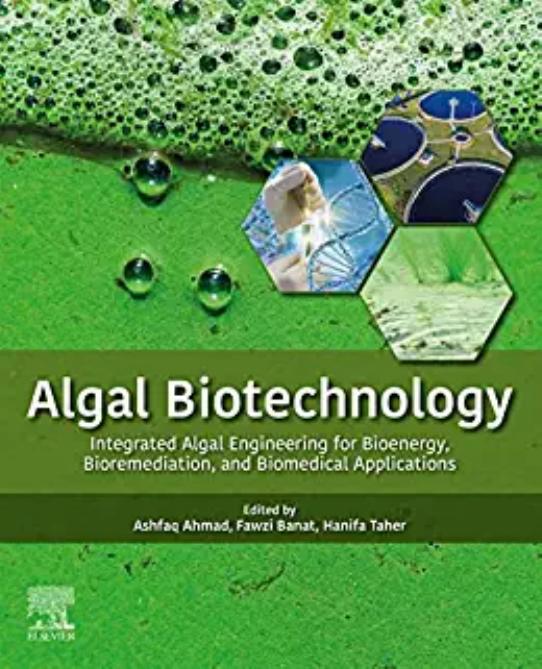
Product details:
ISBN-10 : 032390436X
ISBN-13 : 9780323904360
Author : Ashfaq Ahmad, Fawzi Banat, Hanifa Taher
Algae Biotechnology: Integrated Algal Engineering for Bioenergy, Bioremediation, and Biomedical Applications covers key applications of algae for bioenergy and how to integrate the production of biofuels with environmental, nutraceutical and biomedical processes and products. The book emphasizes cost-effective biofuels production through integrated biorefinery, combining continuous processes and various algae as feedstock to produce biofuel, bioenergy and various high value biochemicals. Novel algal culturing technologies and bioprocess engineering techniques are provided for the optimization of operational approaches for commercial-scale production, as well as to reduce the overall costs. New and existing molecular methods for genetic and metabolic engineering of algae are also presented.
Algal Biotechnology Integrated Algal Engineering for Bioenergy, Bioremediation & Biomedical Applications 1st Table of contents:
Part I: Environmental sector
Chapter 1: Algal engineering for bioremediation, bioenergy production, and biomedical applications
Abstract
1: Introduction
2: Industrial wastewater treatment
3: Algae for CO2 sequestration
4: Bioenergy from algae
5: Biomedical applications
6: Conclusion and future outlook
References
Chapter 2: Microalgae biotechnology for bioremediation applications
Abstract
1: Introduction
2: Microalgae
3: Bioremediation using microalgae
4: Industrial wastewater
5: Antibiotic and hormone
6: Heavy metal
7: Pesticide
8: Integrated CO2 biosequestration bioremediation and biorefinery
9: Conclusions and future prospective
References
Chapter 3: Bioremediation of wastewater using algae for potential renewable bioenergy cogeneration
Abstract
Acknowledgments
1: Introduction
2: Algae classification
3: Bioremediation of wastewater using algae
4: Bioenergy cogeneration using algal biomass
5: Algal practicality and limitations
6: Conclusions and future outlook
References
Chapter 4: Microalgae for bioremediation of pesticides: Overview, challenges, and future trends
Abstract
Acknowledgments
1: Introduction
2: Contamination by pesticides
3: Environmental fate of pesticides
4: Bioremediation of pesticides by microalgae
5: Main factors involved in the bioremediation of pesticides by microalgae
6: Techniques used to increase pesticide removal from water
7: Challenges and future trends
8: Conclusions and future outlook
References
Chapter 5: Algae harvesting: Application of natural coagulants
Abstract
Acknowledgments
1: Introduction
2: Coagulation/flocculation mechanisms
3: Organic coagulants
4: Harvested biomass
5: Conclusions and future perspective
References
Chapter 6: Microalgae cultivation in wastewater from agro-industries: An approach integrated for bioremediation and biomass production
Abstract
1: Introduction
2: Wastewater and nutrient’s recovery
3: Potential microalgae to grow in effluents
4: Microalgae biomass from wastewater
5: Application of microalgal biomass in the agricultural activities
6: Challenges in reducing wastewater treatment costs
7: Conclusions and future outlook
References
Chapter 7: Microalgae-based systems applied to the dual purpose of waste bioremediation and bioenergy production
Abstract
1: Introduction
2: Sources of waste
3: Technologies for waste treatment
4: Bioremediation potential of microalgae
5: Bioenergy technologies and applications
6: Future perspectives and conclusion
References
Part II: Bioenergy sector
Chapter 8: Direct utilization of lipid and starch from wet microalgae (Chlorella vulgaris)
Abstract
1: Introduction
2: Utilization of lipid
3: Utilization of carbohydrate
4: Comprehensive utilization of lipid and starch
5: Conclusions and future perspectives
References
Chapter 9: Algae: An emerging feedstock for biofuels production
Abstract
1: Introduction
2: Types of algal biomass for biofuel production
3: Algal cultivation and biomass production
4: Biomass harvesting and dewatering
5: Lipid extraction and biofuel production
6: Techno-economic analysis of algal biofuel production
7: Prospects and challenges
8: Conclusions and future outlook
References
Chapter 10: Microalgal biofuels: A sustainable pathway for renewable energy
Abstract
1: Introduction
2: Biofuels
3: Technologies for microalgae cultivation
4: Harvesting methods for microalgae
5: Conversion technologies of biomass into biofuels
6: Potential bioenergy products of microalgae
7: Advantages of algal biofuels
8: Environment and sustainable perspective
9: Challenges of algal biofuels and future outlook
10: Conclusions
References
Chapter 11: Thermal treatment kinetics of microalgae for energy production
Abstract
Acknowledgment
1: Introduction
2: Chemical composition of microalgae
3: Thermo-chemical conversion
4: Basic formulas and models of kinetics
5: Isoconversional method
6: Model-fitting method
7: DAEM
8: Conclusion and future outlook
References
Chapter 12: Microalgae: The challenges from harvest to the thermal gasification
Abstract
1: Introduction
2: Microalgae thermochemical characteristics
3: Gasification of microalgae from WWTP
4: Conclusions and future outlook
References
Chapter 13: Harnessing the potential of microalgal species Dunaliella: A biofuel and biocommodities perspective
Abstract
1: Introduction
2: Selection of elite strain and improvement
3: Prerequisite: Optimal growth conditions
4: Downstream process
5: Metabolites production and their applications
6: Challenges and integrated biorefinery approach
7: Conclusion and future scope
References
Part III: Biomedical sector
Chapter 14: Algae cultivation for biomedical applications: Current scenario and future direction
Abstract
Acknowledgment
1: Introduction
2: Considerations for choosing an algal strain
3: Physicochemical conditions in algae growth
4: Culturing of algae
5: Algae harvesting
6: Extraction and purification of high-value based metabolites
7: Biomedical applications of algal extracts: An integrated approach
8: Future direction and challenges
9: Conclusion and future outlook
References
Chapter 15: Biochemical profiling, transcriptomic analysis, and biotechnological potential of native microalgae from the Peruvian Amazon
Abstract
Acknowledgment
1: Introduction
2: Sampling, isolation, purification, and culture of native microalgae cells
3: Morphological and molecular identification
4: Biochemical profiling
5: De novo transcriptomic analysis
6: Biotechnological potential
7: Conclusions and future outlook
References
Chapter 16: Algae in medicine and human health
Abstract
Acknowledgments
1: Introduction
2: Bioprocess of seaweed polysaccharides
3: Conclusions and future outlook
References
Chapter 17: Microalgae biotechnology: Emerging biomedical applications
Abstract
Acknowledgments
1: Introduction
2: Research findings from great microalgae studies
3: How algae can help solve some of the world’s most severe health problems
4: Conclusions and future outlook
References
Chapter 18: Potential applications of the low-molecular-weight metabolome of Synechocystis aquatilis Sauvageau, 1892 (Cyanophyceae: Merismopediaceae)
Abstract
1: Introduction
2: Material and methods
3: Component composition of low-molecular-weight metabolome of S. aquatilis Sauvageau, 1892
4: Prospects for the use of metabolites of S. aquatilis
5: Conclusion and future outlook
References
Chapter 19: Microalgae potentials as bioactive phytochemicals for human’s health: Novel highlights on their production, applications, and emerging analytical technologies
Abstract
Acknowledgment
1: Introduction
2: General applications of microalgae in biotechnology field
3: Microalgae healthy macromolecules and phytochemicals
4: Microalgae as source of bioactive and novel macro- and micro-molecules
5: Methods for identification of microalgae macromolecules
6: Conclusion and future remarks
References
Chapter 20: Microalgae carotenoids: An overview of biomedical applications
Abstract
1: Introduction
2: Microalgae-based carotenoids production
3: Chemical structure and relationship of structure-biological activity
4: Biomedical application
5: Challenges and future research
6: Conclusions
References
Chapter 21: Diatomite-based nanoparticles: Fabrication strategies for medical applications
Abstract
Acknowledgment
1: Introduction
2: Fabrication and surface modifications of DNPs
3: Biocompatibility and uptake of DNPs in vitro and in vivo systems
4: Drug loading and release from DNPs
5: Conclusions and future trends
People also search for Algal Biotechnology Integrated Algal Engineering for Bioenergy, Bioremediation & Biomedical Applications 1st:
algal bioengineering
applied algal biotechnology
bioengineering algae
algal biotechnology lab
algal biotechnology consortium




